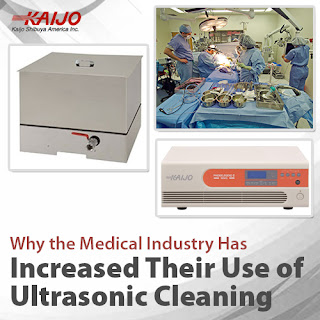Every business manager that buys equipment needs to consider the return on investment (ROI) as part of the decision process. In the case of ultrasonic cleaners, the manager compares the cost of purchasing equipment with the anticipated savings. If the savings over two to three years are equal or greater than the ultrasonic cleaner's cost, the business manager will likely proceed with the equipment purchase. In this case, it means that the cost of purchasing the ultrasonic cleaner is returned after two or three years.
For many ultrasonic cleaner applications, the ROI is expected in much less than two or three years due to the substantial savings on labor and supplies it can provide. The analysis has become more favorable for the cleaners' purchase when the expected lifespan of the equipment is taken into account. After the two or three years are up, and the business has paid back the cost of the purchase from its savings, the ultrasonic cleaners will continue to generate these savings, increasing business profitability.
Apart from financial considerations, the ultrasonic cleaning systems’ performance is superior to most traditional cleaning methods, which also require a lot of work such as scrubbing and soaking of the parts in harsh chemicals. The work is difficult and time-consuming, especially if the parts being cleaned have complex shapes and difficult-to-access areas.
With ultrasonic cleaners, labor costs, and the cost and use of chemicals are significantly reduced. The parts are placed in the cleaning tank, and then the timer is set. After the timer period is up, the parts are now cleaned, with all the contamination completely removed. Supervision is not needed for the cleaning process, allowing the operators to complete other tasks as the ultrasonic cleaner works.
Plus, ultrasonic cleaners deliver rapid and thorough cleaning of parts, which results in increased throughput and improved quality. This means that apart from saving money and improving product quality and customer satisfaction, the use of ultrasonic cleaning is the right one for most businesses.
For more details read the complete article “ROI on Using Sonic Cleaners”. If you have questions or would like to set up a free consultation to discuss your specific cleaning requirements, contact Kaijo at 408-675-5575 or email info@kaijo-shibuya.com.


